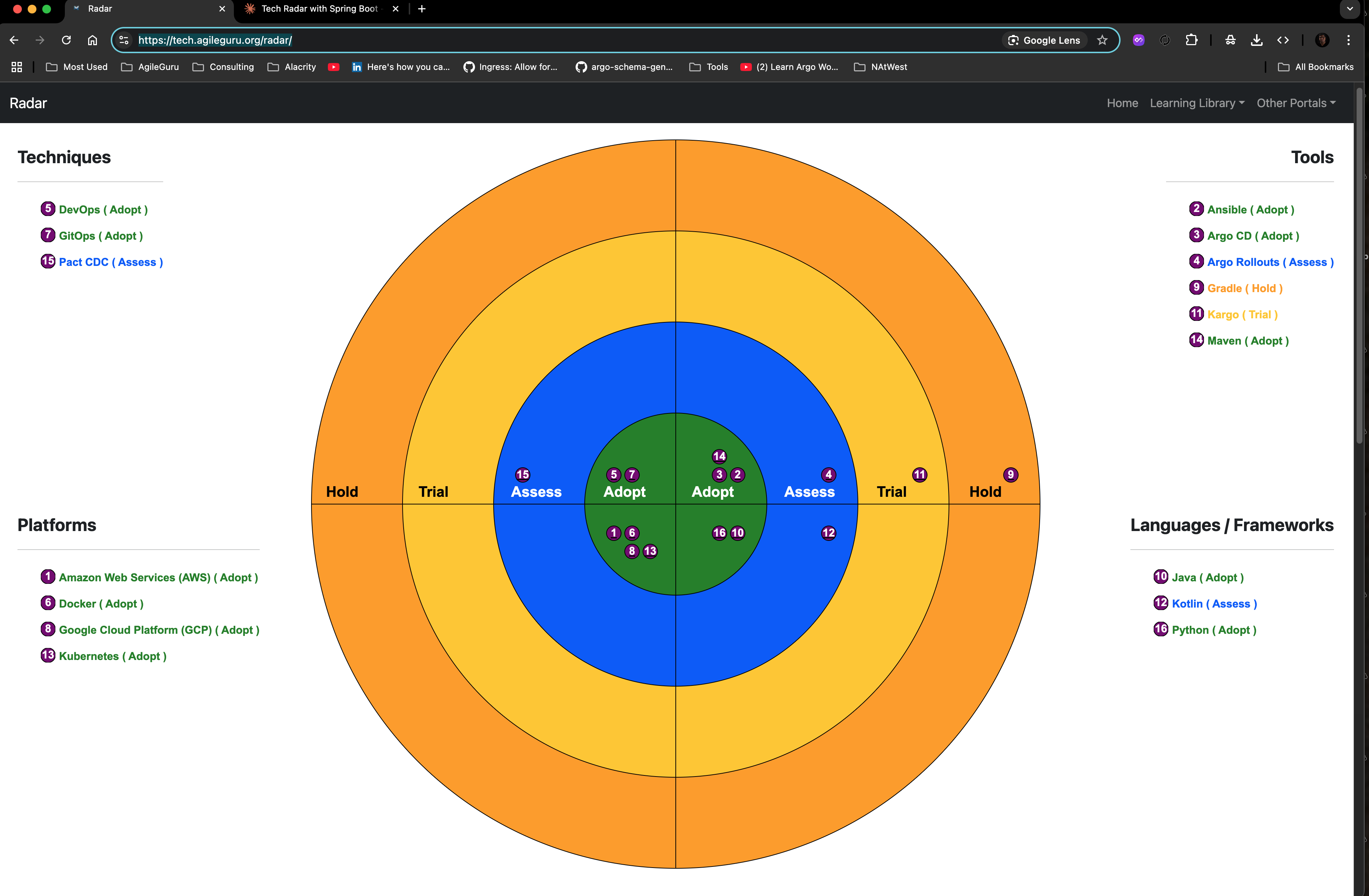Innovations / Solutions / Applications / Cloud-Native
AgileGuru Engineering blog on innovative solutions and technical excellence by engineers and architects.

How Tech Radar helps organizations make informed decisions about technology adoption.
Guru Raghupathy, 01 August 2025
A Tech Radar is a visual and strategic tool that helps organizations make informed decisions about technology adoption. It provides a systematic way to assess, track, and communicate the status of technologies, tools, platforms, languages, and frameworks within your organization. The goal isn't to create the perfect radar, but to establish a systematic approach to technology evaluation that improves over time. Start simple, iterate frequently, and focus on creating value for your engineering teams and organization.
The Four Quadrants
1. Techniques
Methods, practices, and approaches to software development
- Architectural patterns (microservices, event sourcing)
- Development methodologies (DevOps, continuous deployment)
- Testing strategies (contract testing, chaos engineering)
2. Tools
Software development tools and utilities
- Build tools (Maven, Gradle)
- Deployment tools (Argo CD, Argo Rollouts, Kargo)
- Configuration Mgmt (Ansible, Chef, Puppet)
3. Platforms
Technology platforms and infrastructure
- Cloud providers (AWS, Azure, GCP)
- Application Hosting (Docker, Kubernetes, Wildfly)
- Databases (PostgreSQL, MongoDB, Redis)
4. Languages & Frameworks
Programming languages and their associated frameworks
- Languages (Java, Go, Kotlin, Python)
- Frameworks (React, Vue.js, Spring Boot, FastAPI)
- Libraries and SDKs
The Four Rings: Technology Maturity Levels
1. ADOPT (Inner Ring)
We strongly recommend using these technologies
- Proven in production
- Well-understood by the team
- Strong community support
- Clear migration path
Action: Default choice for new projects
2. ASSESS (Second Ring)
Worth exploring with the goal of understanding impact
- Emerging technologies showing potential
- Limited production experience
- Requires investigation and evaluation
Action: Allocate time for research and small experiments
3. TRIAL (Third Ring)
Worth pursuing in projects that can handle the risk
- Promising technologies worth exploring
- Some production experience exists
- Controlled experimentation recommended
Action: Use in non-critical projects or proof-of-concepts
4. HOLD (Outer Ring)
Proceed with caution
- Technologies with significant concerns
- Better alternatives exist
- Legacy technologies being phased out
Action: Avoid for new projects, plan migration
Reference Implementation
We have implemented a tech radar at https://tech.agileguru.org/radar/
Conclusion
A well-implemented tech radar becomes a powerful tool for strategic technology decision-making. It helps organizations balance innovation with stability, reduces decision fatigue, and creates a shared understanding of technology direction. The key to success lies in making it a collaborative, living document that truly reflects and guides your organization's technology evolution. Remember, The goal isn't to create the perfect radar, but to establish a systematic approach to technology evaluation that improves over time. Start simple, iterate frequently, and focus on creating value for your engineering teams and organization.
Author : Guru Raghupathy , 01 August 2025